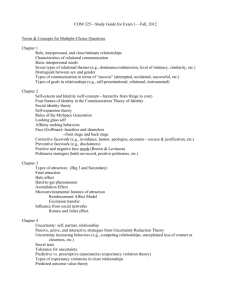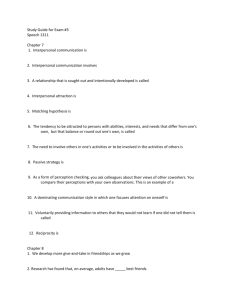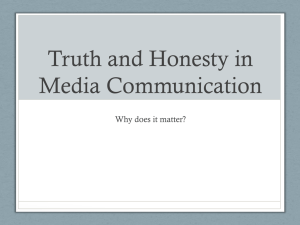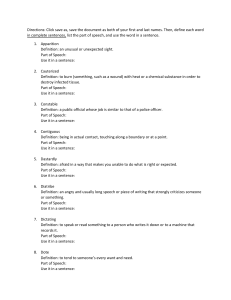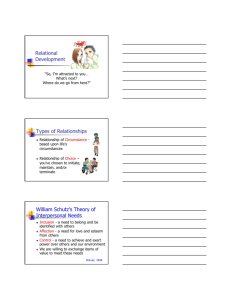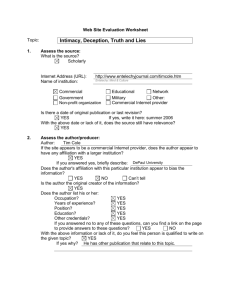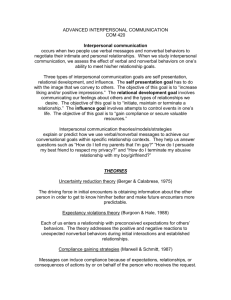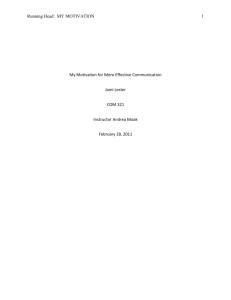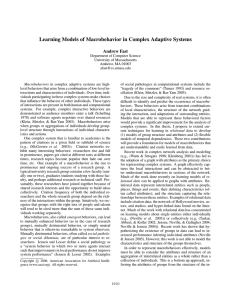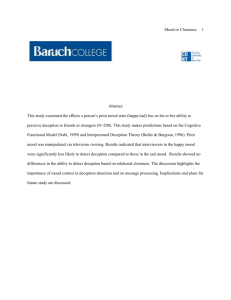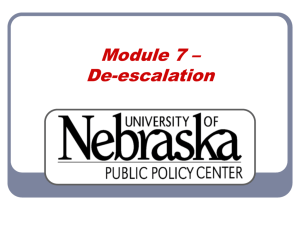Final Exam Review
advertisement
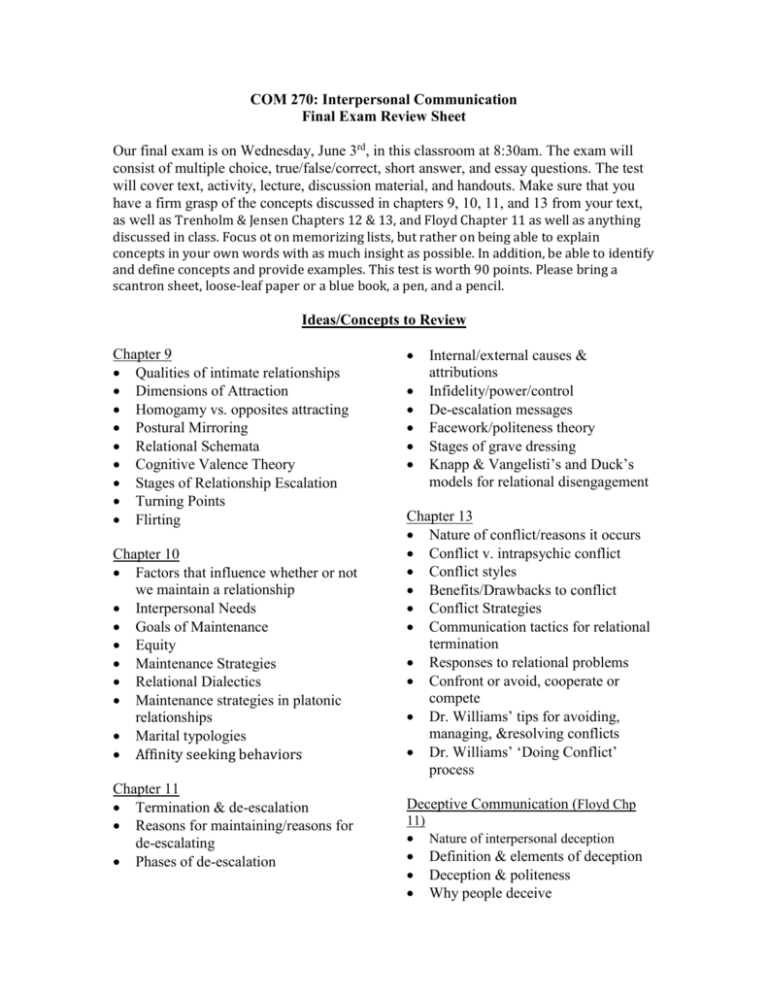
COM 270: Interpersonal Communication Final Exam Review Sheet Our final exam is on Wednesday, June 3rd, in this classroom at 8:30am. The exam will consist of multiple choice, true/false/correct, short answer, and essay questions. The test will cover text, activity, lecture, discussion material, and handouts. Make sure that you have a firm grasp of the concepts discussed in chapters 9, 10, 11, and 13 from your text, as well as Trenholm & Jensen Chapters 12 & 13, and Floyd Chapter 11 as well as anything discussed in class. Focus ot on memorizing lists, but rather on being able to explain concepts in your own words with as much insight as possible. In addition, be able to identify and define concepts and provide examples. This test is worth 90 points. Please bring a scantron sheet, loose-leaf paper or a blue book, a pen, and a pencil. Ideas/Concepts to Review Chapter 9 Qualities of intimate relationships Dimensions of Attraction Homogamy vs. opposites attracting Postural Mirroring Relational Schemata Cognitive Valence Theory Stages of Relationship Escalation Turning Points Flirting Chapter 10 Factors that influence whether or not we maintain a relationship Interpersonal Needs Goals of Maintenance Equity Maintenance Strategies Relational Dialectics Maintenance strategies in platonic relationships Marital typologies Affinity seeking behaviors Chapter 11 Termination & de-escalation Reasons for maintaining/reasons for de-escalating Phases of de-escalation Internal/external causes & attributions Infidelity/power/control De-escalation messages Facework/politeness theory Stages of grave dressing Knapp & Vangelisti’s and Duck’s models for relational disengagement Chapter 13 Nature of conflict/reasons it occurs Conflict v. intrapsychic conflict Conflict styles Benefits/Drawbacks to conflict Conflict Strategies Communication tactics for relational termination Responses to relational problems Confront or avoid, cooperate or compete Dr. Williams’ tips for avoiding, managing, &resolving conflicts Dr. Williams’ ‘Doing Conflict’ process Deceptive Communication (Floyd Chp 11) Nature of interpersonal deception Definition & elements of deception Deception & politeness Why people deceive Types of deception (acts of simulation, falsification, exaggeration, acts of dissimulation, omission, equivocation) Detecting deception Culture & Gender (Trenholm & Jensen Chp 13) Representation (Hall) Definition of culture How cultures differ Ethnic, regional, and class differences In-group/Out-group perceptions Barriers to intercultural understanding Culture and communicative competence Speech Codes Theory (all propositions) Definition of s speech code Cross-cultural & intercultural communication Glass ceiling Tannen’s observed differences between men & women in the workplace Glass ceiling as a wall of words White Knight Method Self-presentation & socialization Communication & Professional Relationships (Trenholm & Jensen Chp 12) Third Places Office friendships and factors Office romances and factors Critical Theory of Communication Approach to Organizations Managerialism Systematically distorted communication Public realms in history Self-presentation & facework in the public realm Avoidance rituals Presentation rituals Playacting Community design and communication Organizational culture Organizational vocabulary Personality traits vs. communication behavior (management) Dyadic linkage model of leadership Factors in communication relationships in the workplace Relationship marketing Persuasive internal marketing
